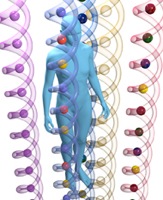Difference between revisions of "Asexuality"
m (Text replacement - "http://nordan.daynal.org" to "https://nordan.daynal.org") |
m (Text replacement - "http://" to "https://") |
||
| Line 1: | Line 1: | ||
[[File:lighterstill.jpg]][[File:Asexual_crpd.jpg|right|frame]] | [[File:lighterstill.jpg]][[File:Asexual_crpd.jpg|right|frame]] | ||
| − | *[ | + | *[https://en.wikipedia.org/wiki/19th_century 1830] |
==Definitions== | ==Definitions== | ||
*1: lacking [[sex]] or functional sex organs <asexual plants> | *1: lacking [[sex]] or functional sex organs <asexual plants> | ||
| Line 13: | Line 13: | ||
==Description== | ==Description== | ||
| − | '''Asexuality''' (sometimes referred to as nonsexuality), in its broadest sense, is the lack of [ | + | '''Asexuality''' (sometimes referred to as nonsexuality), in its broadest sense, is the lack of [https://en.wikipedia.org/wiki/Sexual_attraction sexual attraction] to others or the lack of interest in [[sex]]. It may also be considered a lack of a sexual orientation. One commonly cited study published in 2004 placed the prevalence of asexuality at 1%. |
| − | Asexuality is distinct from [ | + | Asexuality is distinct from [https://en.wikipedia.org/wiki/Sexual_abstinence abstention from sexual activity] and from [https://en.wikipedia.org/wiki/Celibacy celibacy], which are behavioral and generally motivated by factors such as an individual's personal or religious beliefs; sexual orientation, unlike sexual behavior, is believed to be "[[enduring]]". Some asexual people do engage in sexual activity despite lacking a [[desire]] for sex or sexual attraction, due to a variety of reasons, such as a desire to please [[romantic]] partners. |
| − | Only recently has asexuality started to become [[accepted]] as a [ | + | Only recently has asexuality started to become [[accepted]] as a [https://en.wikipedia.org/wiki/Sexual_orientation sexual orientation] and a field of scientific [[research]], and a growing body of research from both [[sociological]] and [[psychological]] [[perspectives]] has begun to [[coalesce]]. While some researchers assert that asexuality is a sexual orientation, others disagree, and various asexual communities have started to form since the advent of the [[Internet]] and social media. The most prolific and well-known of these [[communities]] has been the [https://en.wikipedia.org/wiki/Asexual_Visibility_and_Education_Network Asexual Visibility and Education Network] (AVEN), which was founded in 2001. |
| − | Currently, the U.S. states of Vermont and New York have labeled asexuals as a protected [[class]]. Asexuality does not typically attract [[attention]] of the public or major scrutiny. Thus it has not been subject of [[legislation]] as other sexual orientations have.[ | + | Currently, the U.S. states of Vermont and New York have labeled asexuals as a protected [[class]]. Asexuality does not typically attract [[attention]] of the public or major scrutiny. Thus it has not been subject of [[legislation]] as other sexual orientations have.[https://en.wikipedia.org/wiki/Asexuality] |
==See also== | ==See also== | ||
*'''''[[Bisexuality]]''''' | *'''''[[Bisexuality]]''''' | ||
Latest revision as of 23:40, 12 December 2020
Definitions
- 1: lacking sex or functional sex organs <asexual plants>
- 2a : involving or reproducing by reproductive processes (as cell division, spore formation, fission, or budding) that do not involve the union of individuals or gametes <asexual reproduction> <an asexual generation>
- b : produced by asexual reproduction <asexual spores>
- 3: devoid of sexuality <an asexual relationship>
Description
Asexuality (sometimes referred to as nonsexuality), in its broadest sense, is the lack of sexual attraction to others or the lack of interest in sex. It may also be considered a lack of a sexual orientation. One commonly cited study published in 2004 placed the prevalence of asexuality at 1%.
Asexuality is distinct from abstention from sexual activity and from celibacy, which are behavioral and generally motivated by factors such as an individual's personal or religious beliefs; sexual orientation, unlike sexual behavior, is believed to be "enduring". Some asexual people do engage in sexual activity despite lacking a desire for sex or sexual attraction, due to a variety of reasons, such as a desire to please romantic partners.
Only recently has asexuality started to become accepted as a sexual orientation and a field of scientific research, and a growing body of research from both sociological and psychological perspectives has begun to coalesce. While some researchers assert that asexuality is a sexual orientation, others disagree, and various asexual communities have started to form since the advent of the Internet and social media. The most prolific and well-known of these communities has been the Asexual Visibility and Education Network (AVEN), which was founded in 2001.
Currently, the U.S. states of Vermont and New York have labeled asexuals as a protected class. Asexuality does not typically attract attention of the public or major scrutiny. Thus it has not been subject of legislation as other sexual orientations have.[1]
